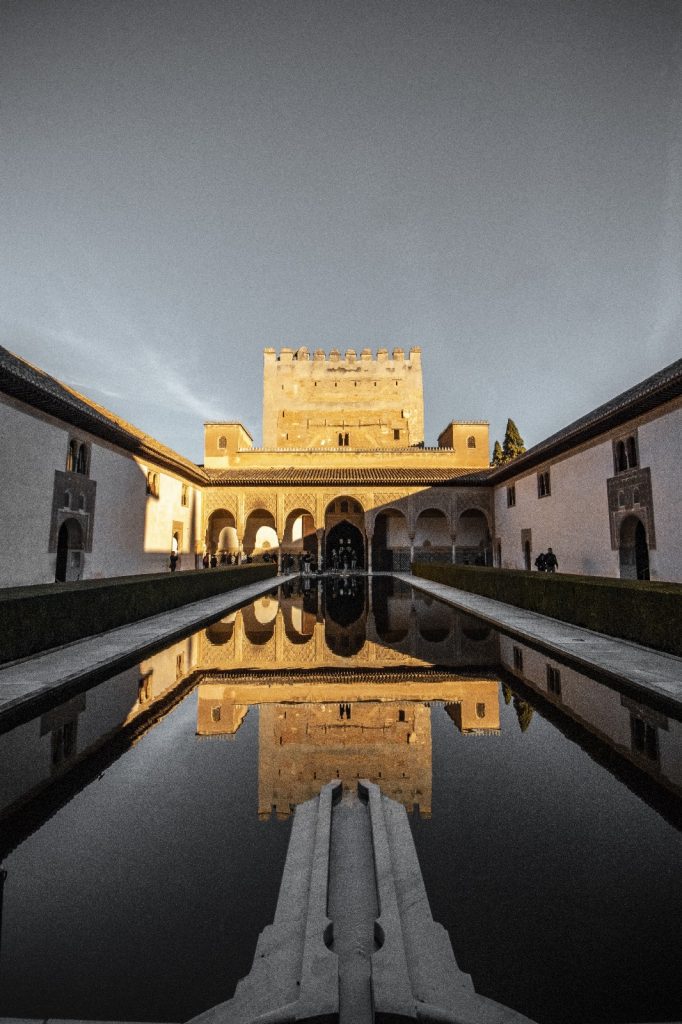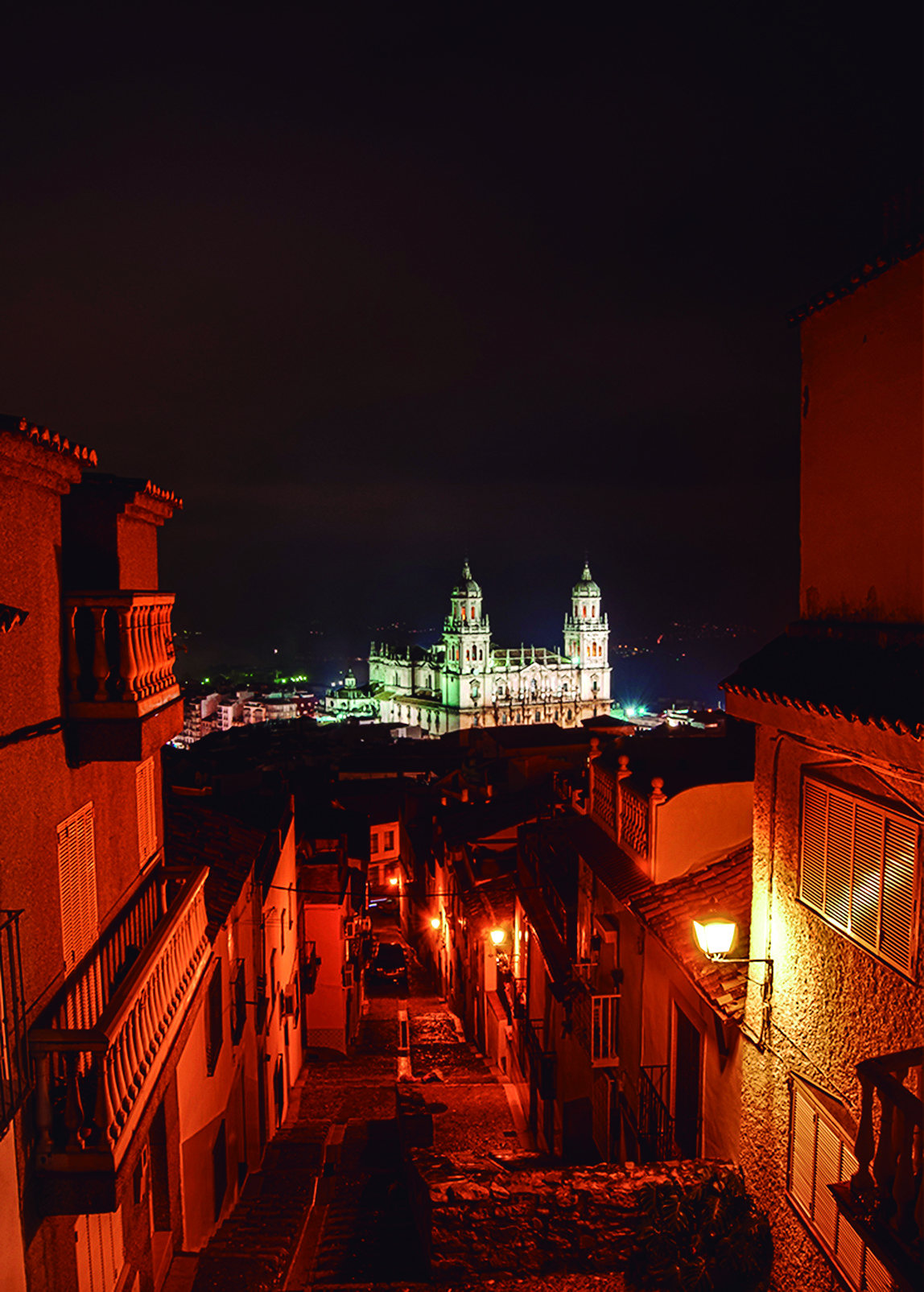Uncovering Mysteries: Legends of Nasrid Palace
The Nasrid Palaces are one of the most popular tourist destinations in Granada, Spain. Built by the Nasrid dynasty, the palaces are a UNESCO World Heritage Site and are known for their intricate tile work, and delicate stucco, and belong to the monumental complex of the Alhambra.
But beyond their beauty, the Nasrid Palaces are also home to several legends and mysteries.
These legends add to the palace’s allure and make it a fascinating place to explore.
1.1 Legend of the Court of the Lions
Once upon a time, a beautiful and intelligent Arab princess named Zaira traveled to Granada and stayed in the Alhambra.
Zaira’s father, the king forbade her from any social contact, however, when Zaira went out, she was always accompanied by the talisman that her mother gave her on her deathbed.
The princess found a beautiful, brightly lit patio inside the Alhambra where she used to spend most of her time.
One afternoon, a boy named Arturo jumped over the fence of that beautiful garden and fell in love with Zaira.
The king discovers their love story and captures Arturo. When Zaira found out about that tragedy, she began to cry uncontrollably, begging her father not to kill her lover. At the same time, she finds the diary of her father and discovers a terrible truth.
In the diary, she read: – “I killed the king and the queen, and now Zaira is mine. My 11 men and I have managed to conquer the Alhambra and now I am the king. Zaira will always think that I am her father. He will never know that his talisman is cursed.”
When she discovered the whole truth, the talisman’s curse was activated, causing the king and his 11 men to become stone lions, since she felt the rage of a lion inside.
Finally, due to that curse, that patio became called “the Court of the Lions, which said the fountain is in the center of the patio. 12 stone lions, which would be the 11 henchmen of the king and himself. After that, Zaira went in search of her beloved Arturo, and they were happy for the rest of their lives.
1.2 The Legend of the Sultan’s Daughter
The story tells of a beautiful young woman who was the daughter of the Nasrid Sultan. She was known for her kindness and compassion.
One day, the Sultan’s Daughter was walking in the gardens of the Alhambra when she came across a poor beggar. The beggar was hungry and tired, and the Sultan’s Daughter took pity on him. She gave him food and water, and she listened to his story.
The beggar was a soldier who had been wounded in battle. He had been left for dead, and he had been wandering the streets of Granada ever since.
The Sultan’s Daughter was moved by the beggar’s story. She took him to the palace, where she had him cleaned up and given a new set of clothes and money.
The next day, the beggar returned to the palace. He told the Sultan’s Daughter that he had been blessed by her kindness. He had found a job and a new home, and he was finally living a happy life.
The Sultan’s Daughter was overjoyed to hear the beggar’s story. She knew that she had made a difference in his life, and she was glad that she could help him.
1.3 The legend of the three princesses
One of the legends says that Muhammad VII had his daughters Zaida, Zoraida, and Zorahaida locked in a tower in the Alhambra.
The three fell in love with some Christian soldiers and one night, two of them escaped through a window, while Zorahaida, thinking about how her father would feel when he saw that his daughters were gone, decided to stay.
Upon discovering the escape, the king locked Zorahaida up and never allowed her to leave again.
This legend, collected in Washington Irving’s Tales of the Alhambra, takes place in the well-known Torre de las Infantas of the Nasrid monument, an exclusive enclave that October can be visited on Tuesdays, Wednesdays, Thursdays, and Sundays, with admission General and Gardens.
1.4 Legend of the Gate of Justice
The Gate of Justice is one of the four gates that enter the palace complex of the Alhambra. Legend has it that the construction of the Alhambra was so strong and hard that, even when attacked by a thousand enemy armies, it would never fall.
It was said that, on the day that the key of the inner arch of the Gate of Justice and the hand of its outer arch joined together, the Alhambra would fall because the end of the world would have arrived.
1.5 Legend of the Abencerrajes room
The Abencerrajes room, located in the Palacio de Los Leones in front of the Dos Hermanas room, is one of the most beautiful rooms in the palace complex of the Alhambra. This beautiful room stands out thanks to its impressive dome.
Despite its beauty, it is a bloodthirsty legend that falls on this room. According to popular tradition, the Abencerrajes knights, a line of warriors from North Africa who had come to the peninsula to fight against the Christians, were beheaded in this room.
The story goes that these knights were called to the palace on the day of the abdication of King Mohamed “the lame”, with whom they had had disputes. Once inside, they were treacherously tortured and slit their throats.
If you visit the Abencerrajes room, you will be able to see a stain that covers part of the marble basin in the center of the room. It is said that the stain is a trace of blood.
1.6 Legend of Queen Zoraida
Many legends circulate about the life of Queen Zoraida, one of the wives of Sultan Muley Hacén.
It is said that Zoraida was a Christian slave who was held captive in one of the towers of the Alhambra.
While she was a captive, the sultan fell in love with her and they both had two children. This caused rivalries with Boabdil, who was the son of his first wife and the heir to the throne.
This situation unleashed a covert war with palace intrigues that weakened the court at a time when the Catholic kings did not stop adding victories.
Some think that Zoraida was an imposter who falsely renounced her faith to sow discord at the court of Granada.
Conclusion
All the Alhambra secrets and Nasrid Palace legends have been uncovered.
Are you ready to come and see the scenarios?










